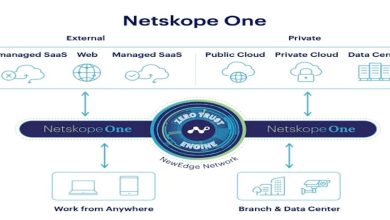Healthcare Sector Faces Escalating Cybersecurity Risks Amid Digital Transformation
A new Trend Micro report reveals increasing cyber threats targeting Asia Pacific’s healthcare sector, with cloud infrastructure attacks, phishing, and system vulnerabilities topping the list amid ongoing digital transformation.

The digital transformation of healthcare is improving patient care and operational efficiency but has also exposed the sector to heightened cybersecurity threats. Ransomware attacks, data breaches, and unauthorised access to sensitive information have surged, making healthcare a prime target for cybercriminals.
Frost & Sullivan’s latest growth opportunity analysis highlights the urgent need for healthcare organisations to strengthen cybersecurity frameworks and invest in advanced security solutions to protect patient data and ensure operational resilience.
Healthcare Security Market Poised for Significant Growth
As healthcare organisations prioritise security, the global healthcare cybersecurity market is set to grow from $84.53 billion in 2023 to $174.79 billion by 2030. This growth is driven by the increasing integration of cybersecurity capabilities and the enforcement of stringent data protection laws across regions.
North America and Europe to Drive Security Investments
The North American healthcare sector is expected to remain the largest regional market for healthcare security, with spending anticipated to achieve a CAGR of 11.4% by 2030. The United States continues to lead the development of security standards and regulatory frameworks, ensuring that healthcare providers remain resilient against emerging cyber threats.
Meanwhile, Europe is also witnessing significant growth in healthcare cybersecurity investments, driven by the implementation of the General Data Protection Regulation (GDPR) and increasing awareness of the need for advanced security measures. European healthcare institutions are focusing on threat intelligence and proactive security strategies to safeguard critical infrastructure, with cybersecurity spending in the region projected to grow steadily over the forecast period.
Frost & Sullivan forecasts that spending on threat intelligence solutions – one of the fastest-growing segments – will increase globally from $202.4 million in 2023 to $879.2 million by 2030, at an impressive CAGR of 23.4%. With hospitals and healthcare entities being prime targets for ransomware attacks and phishing schemes, threat intelligence is becoming an essential component of a robust security strategy.
Danielle VanZandt, Growth Expert at Frost & Sullivan, highlights the importance of a multi-faceted approach to security: “A resilient security ecosystem requires not only cutting-edge cybersecurity tools but also robust policies and continuous staff education. By combining technology with workforce training, healthcare organisations can build a secure foundation for digital transformation.”
Looking Ahead: The Future of Healthcare Security
As cyber threats evolve, the integration of threat intelligence tools, proactive security measures, and compliance with regulatory frameworks will be critical to maintaining a secure healthcare environment. Healthcare organisations that invest in these capabilities will be better equipped to protect sensitive patient data while continuing to provide uninterrupted care.
Click here to unlock growth potential and explore the future of healthcare security.




